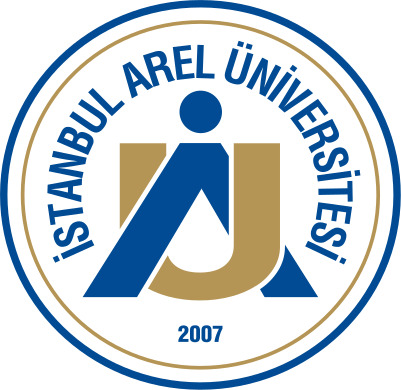Graphic Design
Overview
<!-- wp:paragraph --> <p><strong>Program Description</strong><br><strong>Graphic Design at Istanbul Arel University: Shaping Creative Visual Communicators for the Digital Age</strong></p> <!-- /wp:paragraph --> <!-- wp:paragraph --> <p>The Graphic Design program at Istanbul Arel University is a dynamic, creative, and technology-driven course designed to prepare students for the rapidly evolving field of visual communication. This program combines artistic expression with digital design techniques, equipping students with the skills necessary to craft compelling visual messages across a variety of media. From print advertising and brand identity to web design and interactive media, students are trained to create aesthetically engaging and strategically effective designs that meet the needs of modern businesses, digital platforms, and creative industries. Through hands-on projects, collaborative experiences, and exposure to industry-standard tools, graduates are ready to make their mark as professional graphic designers.</p> <!-- /wp:paragraph --> <!-- wp:paragraph --> <p><strong>Program Mission and Vision</strong><br>The mission of the Graphic Design program at Istanbul Arel University is to cultivate innovative designers who can communicate powerful messages through visual media. By combining design theory, technical skills, and creative problem-solving, the program aims to produce graduates who can translate complex ideas into clear, visually appealing solutions. The vision is to develop designers who are well-versed in the latest design trends, digital technologies, and branding strategies, making significant contributions to the visual culture of the future.</p> <!-- /wp:paragraph --> <!-- wp:paragraph --> <p><strong>Curriculum Structure</strong><br>The Graphic Design program at Istanbul Arel University offers a comprehensive curriculum that balances artistic creativity with practical design skills. Students are exposed to a wide range of design disciplines, enabling them to specialize or work across various aspects of visual communication. Key areas of study include:</p> <!-- /wp:paragraph --> <!-- wp:paragraph --> <p><strong>Introduction to Graphic Design</strong>: In this foundational course, students are introduced to the history and theory of graphic design. They learn the basics of visual communication, design principles, typography, and color theory, laying the groundwork for their design journey.</p> <!-- /wp:paragraph --> <!-- wp:paragraph --> <p><strong>Design Software and Tools</strong>: Students gain hands-on experience with industry-standard design software, such as Adobe Photoshop, Illustrator, and InDesign. This course teaches students the tools they need to create professional-quality designs for print and digital media.</p> <!-- /wp:paragraph --> <!-- wp:paragraph --> <p><strong>Typography and Layout</strong>: Typography is a core element of graphic design. In this course, students learn the art and science of arranging type, including font selection, spacing, and readability. They also explore layout design, understanding how to create visually balanced compositions in both print and digital formats.</p> <!-- /wp:paragraph --> <!-- wp:paragraph --> <p><strong>Brand Identity and Logo Design</strong>: Students explore the principles of branding and logo design. They learn how to create cohesive visual identities for businesses, including logo design, color schemes, and brand guidelines that communicate a company’s mission and values.</p> <!-- /wp:paragraph --> <!-- wp:paragraph --> <p><strong>Illustration and Visual Storytelling</strong>: This course focuses on the creative aspects of graphic design, such as illustration, drawing techniques, and visual storytelling. Students learn how to incorporate hand-drawn and digital illustrations into their designs to enhance narrative impact.</p> <!-- /wp:paragraph --> <!-- wp:paragraph --> <p><strong>Web and Digital Design</strong>: As the digital world continues to expand, this course covers web design fundamentals, including layout, user interface (UI) design, and web typography. Students learn how to design websites and mobile applications with a focus on usability, aesthetics, and responsive design.</p> <!-- /wp:paragraph --> <!-- wp:paragraph --> <p><strong>Motion Graphics and Animation</strong>: Students learn the basics of motion graphics and animation, gaining skills in creating dynamic visual content for videos, social media, and advertisements. This course covers the fundamentals of video editing, animation principles, and the integration of motion graphics into digital media.</p> <!-- /wp:paragraph --> <!-- wp:paragraph --> <p><strong>Photography for Designers</strong>: Graphic designers often work closely with photography. This course teaches students how to use photography in their design projects, including concepts such as composition, lighting, and photo editing. Students also learn how to incorporate photos into digital and print designs.</p> <!-- /wp:paragraph --> <!-- wp:paragraph --> <p><strong>User Experience (UX) and User Interface (UI) Design</strong>: Students are introduced to the principles of UX and UI design. They learn how to create user-friendly digital products, focusing on improving usability, accessibility, and overall user satisfaction in websites, apps, and other digital platforms.</p> <!-- /wp:paragraph --> <!-- wp:paragraph --> <p><strong>Packaging Design</strong>: This course focuses on the design of product packaging. Students learn how to create functional and visually appealing packaging that aligns with branding and meets practical requirements, such as durability and consumer convenience.</p> <!-- /wp:paragraph --> <!-- wp:paragraph --> <p><strong>Design Thinking and Problem Solving</strong>: Students learn to approach design challenges using a problem-solving mindset. This course emphasizes creative thinking, brainstorming techniques, and iterative design processes that allow students to develop effective and innovative design solutions.</p> <!-- /wp:paragraph --> <!-- wp:paragraph --> <p><strong>Advertising and Marketing Design</strong>: This course focuses on the role of graphic design in advertising and marketing campaigns. Students learn how to design visually engaging advertisements, brochures, posters, and promotional materials that align with marketing strategies and effectively communicate key messages.</p> <!-- /wp:paragraph --> <!-- wp:paragraph --> <p><strong>Professional Practice and Portfolio Development</strong>: In this course, students learn the business side of graphic design, including working with clients, managing projects, and understanding industry standards. Students develop a professional portfolio, showcasing their best work to potential employers and clients.</p> <!-- /wp:paragraph --> <!-- wp:paragraph --> <p><strong>Capstone Project and Internship</strong>: In their final year, students work on a capstone project that requires them to design a comprehensive branding or visual communication campaign. They also complete an internship at a design studio, agency, or other industry partner, gaining valuable real-world experience.</p> <!-- /wp:paragraph --> <!-- wp:paragraph --> <p><strong>State-of-the-Art Facilities and Equipment</strong><br>Istanbul Arel University provides students with access to modern design labs equipped with the latest software, high-performance computers, and professional printing equipment. These facilities allow students to experiment with various media and create high-quality, production-ready designs.</p> <!-- /wp:paragraph --> <!-- wp:paragraph --> <p><strong>Emphasis on Innovation and Creativity</strong><br>The Graphic Design program encourages students to think outside the box and push the boundaries of traditional design. Through interdisciplinary collaboration, students have the opportunity to work with peers in marketing, photography, and other fields, enabling them to develop creative and holistic solutions to design challenges.</p> <!-- /wp:paragraph --> <!-- wp:paragraph --> <p><strong>Career Opportunities</strong><br>Graduates of the Graphic Design program at Istanbul Arel University are well-equipped to pursue a wide range of career opportunities in the design and creative industries. Career options include roles as graphic designers, art directors, UI/UX designers, brand designers, motion graphic artists, web designers, illustrators, and packaging designers. Graduates can work in design agencies, corporate marketing departments, media companies, or as freelancers and entrepreneurs.</p> <!-- /wp:paragraph --> <!-- wp:paragraph --> <p><strong>Shaping the Future of Visual Communication</strong><br>Istanbul Arel University’s Graphic Design program prepares students to become skilled, innovative designers who will lead the way in visual communication. With a focus on creativity, technical expertise, and industry-relevant skills, graduates are ready to shape the future of design and contribute to a visually dynamic world.</p> <!-- /wp:paragraph -->
Program Description
The Graphic Design program at İstanbul Arel University offers a comprehensive curriculum designed to prepare students for successful careers in this dynamic field. The program combines theoretical knowledge with practical skills, ensuring graduates are ready for the challenges of the industry.
The program is taught by experienced faculty members who are leaders in their respective fields, providing students with insights into current industry practices and future trends.
Curriculum Highlights
- Advanced Research Methods: Learn cutting-edge research techniques and methodologies.
- Industry Analysis: Explore current industry trends and develop analytical skills.
- Leadership and Management: Develop essential leadership skills for managing teams and projects.
- Innovation and Entrepreneurship: Cultivate creative thinking and entrepreneurial mindset.
- Digital Transformation: Understand how technology is reshaping industries and businesses.
- Sustainable Development: Explore environmentally sustainable practices and their implementation.
- Global Markets: Study international market dynamics and global business operations.
- Technology Integration: Learn to leverage technology for improved business outcomes.
Requirements:
- Bachelor's degree (for Master's programs) or equivalent qualifications.
- Proven English language proficiency (IELTS 6.5+ or equivalent).
- Complete transcripts from previous education.
- A compelling letter of motivation explaining your interest in the program.
- Two letters of recommendation from academic or professional references.
- Valid passport with appropriate visa status or eligibility.
Benefits:
- World-class faculty with extensive industry experience.
- Modern campus facilities and cutting-edge learning environments.
- Strong industry partnerships providing networking opportunities.
- Internship opportunities with leading companies in the field.
- Comprehensive career services including job placement assistance.
- Access to a global alumni network for lifelong professional connections.
Begin your educational journey today.
Apply now and take the first step towards your future.






